On Wednesday 19 April, Marion Venners led a walk which started from the Village Hall car park at Hampstead Norreys. The route led across the sports field and into the churchyard, where an unusual cast iron monument to various members of the Lowsley family was inspected. Meadow Saxifrage was just coming into flower in the churchyard. The main road through the village passes a short stretch of the River Pang where Marsh-marigold and Bistort were flowering on the bank. The next section of the walk followed a footpath which climbed steeply north-eastwards above the village and opened out into fields with views down the valley of the Pang. Skylarks sang overhead, a Raven called, a Buzzard was seen and a single Swallow flew northwards. The footpath ran next to an interesting old hedge with species including Wayfaring-tree and Spurge-laurel. The field on the other side of the hedge was significantly higher and it was suggested that this had been created by medieval ridge and furrow cultivation. The route continued along a shallow valley with several industrial units where another Swallow and a Muntjac deer were seen. The next footpath climbed gently up through woodland. The ground flora was initially dominated by Dog’s Mercury, but gradually Bluebells took over and the upper part of the woodland was a sea of blue. Also seen here were Wood Anemone, Early Dog-violet, Wood Spurge and Greater Stitchwort. Small pink spherical balls of Wolf’s-milk slime mould were spotted near the base of a multi-stemmed tree. A little way back from the path were a few big old Yew trees. Dense twiggy branches of Witch’s Broom on a Wych Elm were turning green with new leaves. Emerging at the top of the wood, the footpath passed a brick structure which was the remains of a World War II air raid shelter. The very stony ploughed field ahead was used as a wartime airfield.
Turning right along the edge of the field, the walk continued southwards, before turning back into woodland. A Fox was spotted at the edge of the wood. Once again, the top of the wood was blue with Bluebells. Other flowers seen here included Primrose, Ramsons and Barren Strawberry. The footpath led downhill, following the fence which marked the edge of the woodland. Beyond the fence was a grassy pasture which was full of anthills. The field belonged to Wyld Court, the former home of botanist J.E.Lousely. He was the author of a number of botanical books, including ‘The Wild Flowers of Chalk and Limestone’ in the Collins New Naturalist series. At the bottom of the wood, next to the road, was a stone memorial to Job Lousely. It said that this was his favourite spot and he would have liked to be buried there, but unfortunately this was not permitted. It was interesting to compare the spelling of the family name on the church memorial (Lowsely) and on the memorial stone (Lousely). After a short stretch along the road, the walk continued south-westwards along another footpath which led down towards the river valley. Two fields to the right of the path were yellow with Cowslips. The footpath led to a ford and footbridge over the River Pang. The water was crystal clear and in places was white with the flowers of Water-crowfoot. Careful inspection afterwards of a photograph suggested that this was Stream Water-crowfoot Ranunculus penicillatus. A single Cuckooflower plant was flowering nearby. The path continued uphill and led into Down Wood, part of the Eling Estate. Once again, the Bluebells covered the ground with a sea of blue. Birds heard included Chiffchaff and Nuthatch and the leaves of Pignut were found beside the path. Towards the northern edge of the woods is what is described on the map as a ‘Mound’ and on a nearby sign as a ‘Motte’. It is surrounded by a deep ditch in which Wood Spurge was growing. The path then led out of the wood and across the sports field to the car park. Most of the group then went to the Renegade Brewery at Yattendon for lunch.
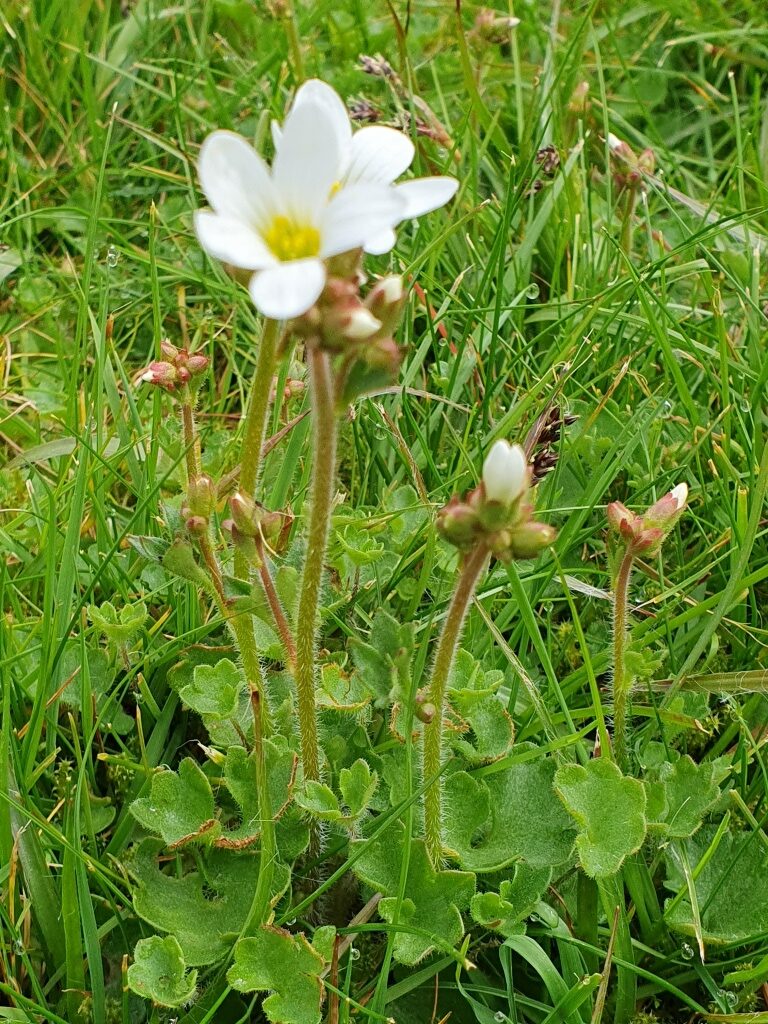
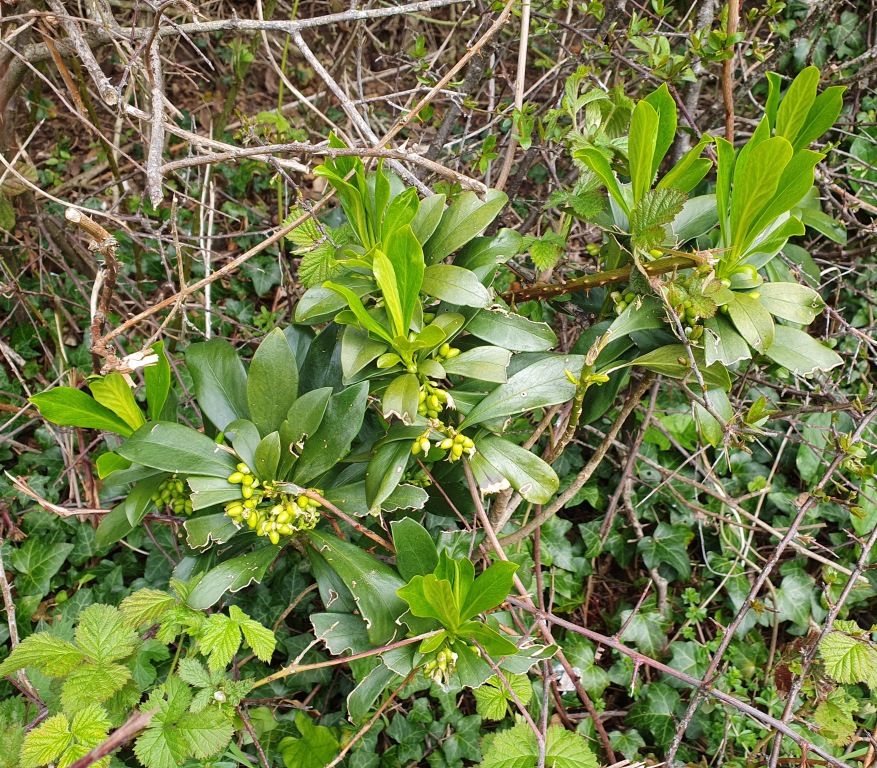
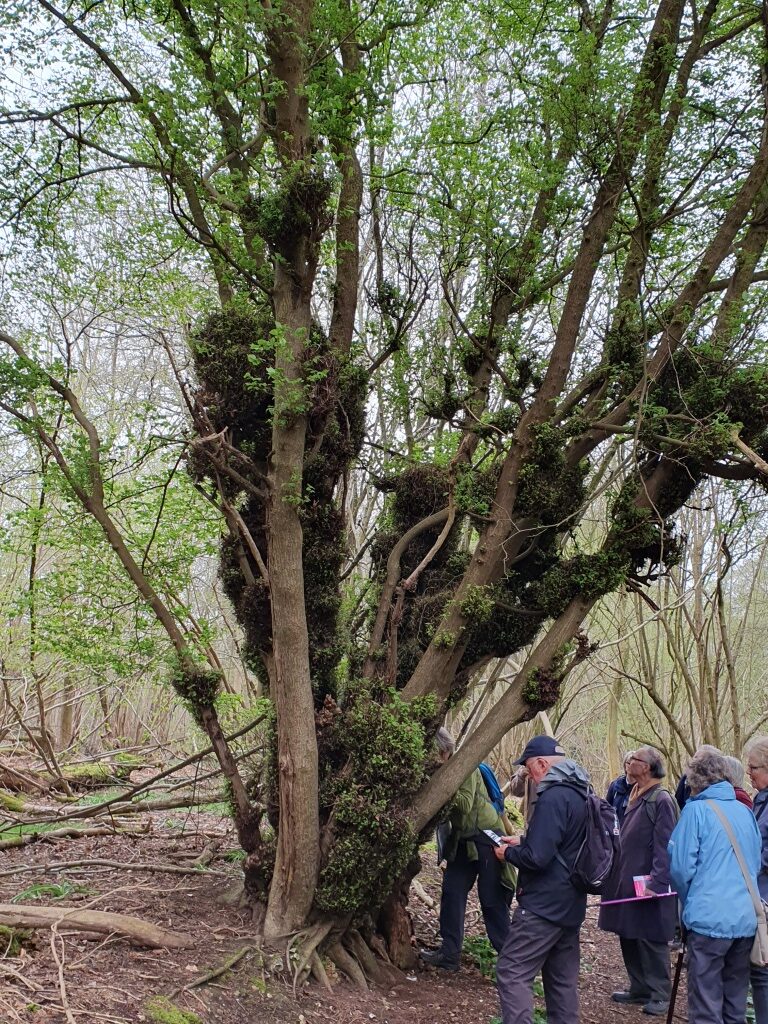
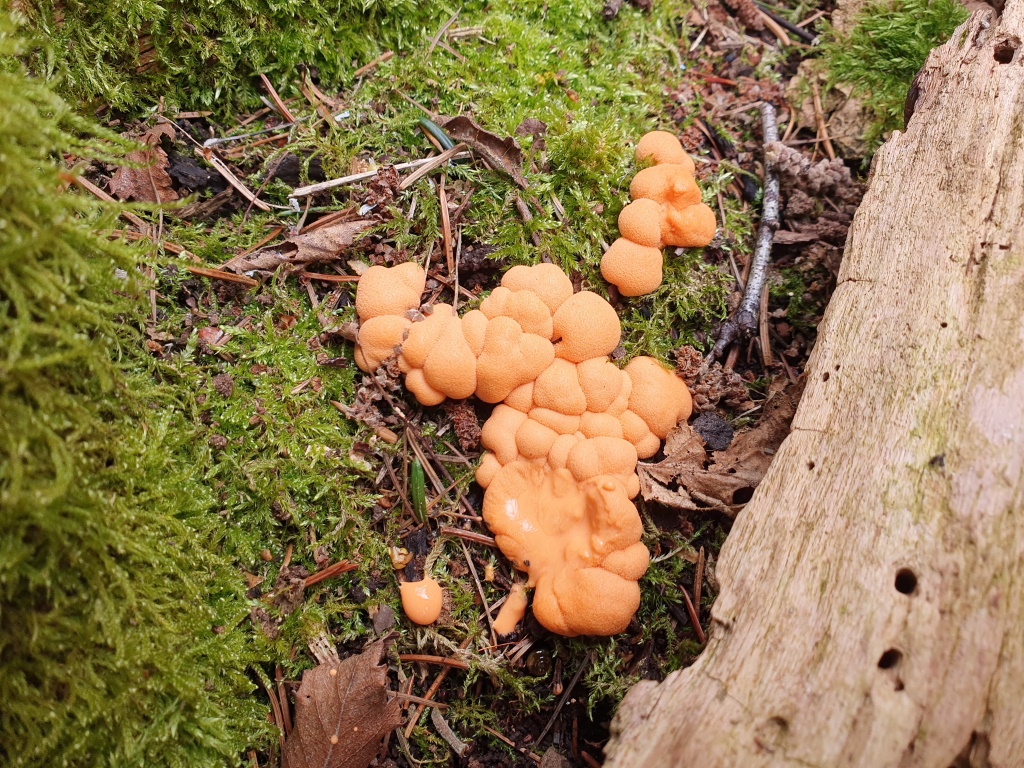
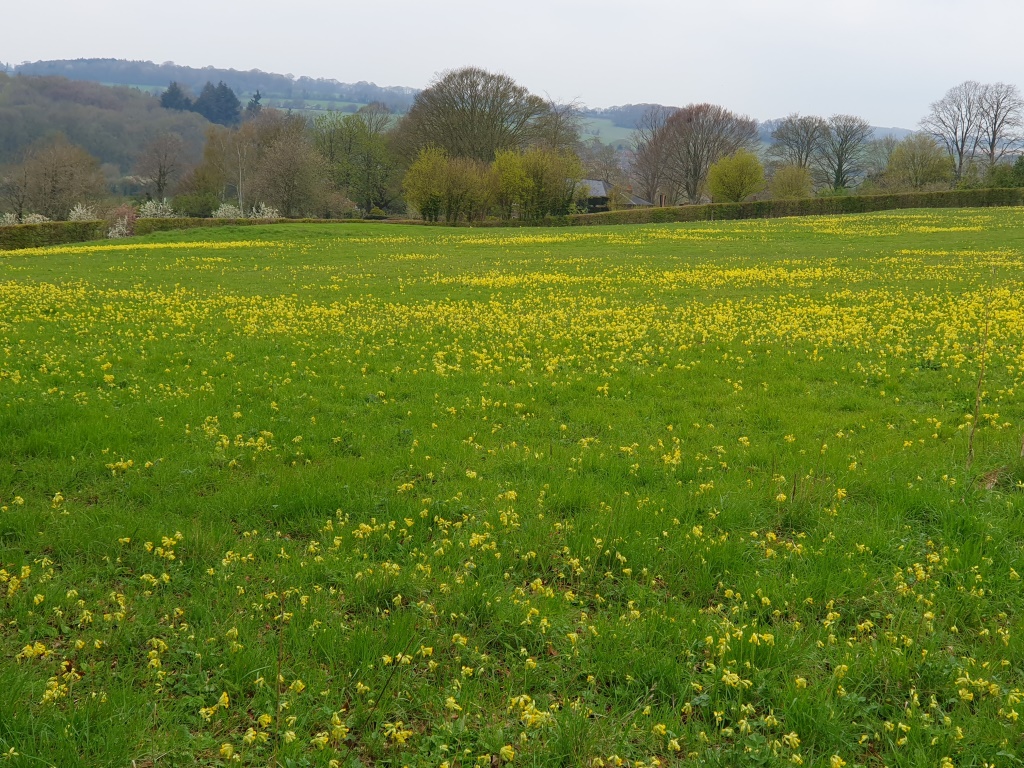
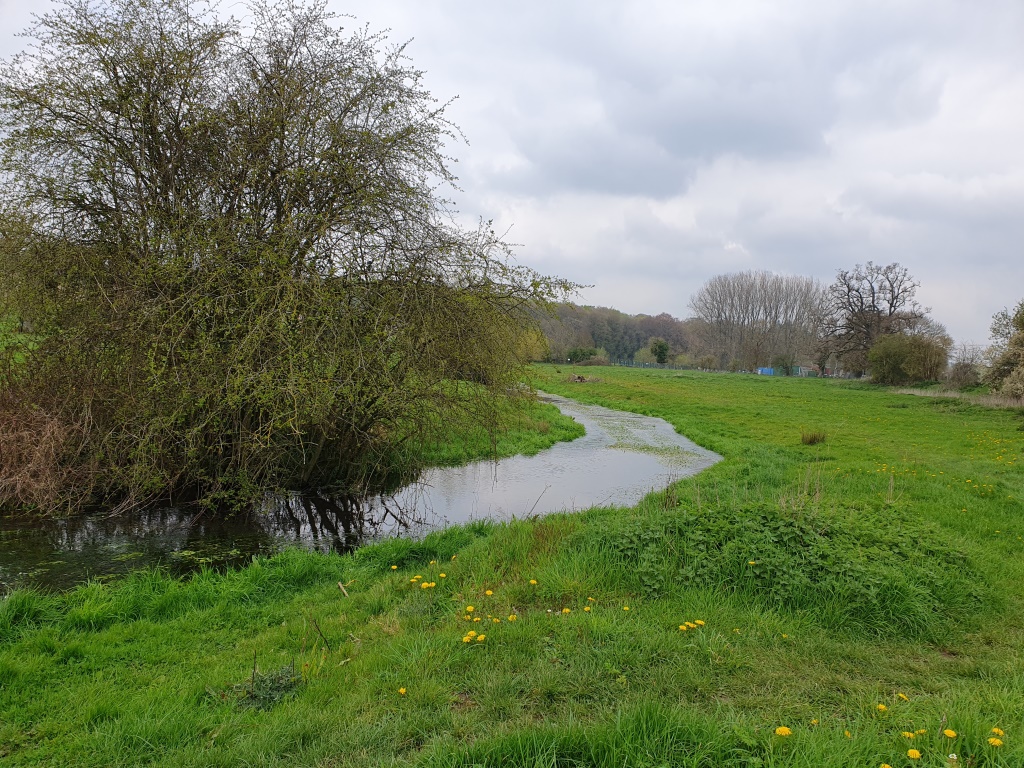
Pictures by Fiona Cummins
